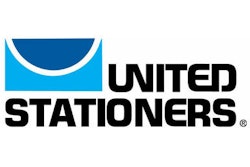ARLINGTON, VA — Job gains and business investment are the two lead drivers keeping manufacturing on a solid growth path, according to the MAPI Foundation's U.S. Industrial Outlook, a quarterly report that analyzes 27 major industries. The MAPI Foundation is the research affiliate of the Manufacturers Alliance for Productivity and Innovation.
Manufacturing industrial production increased at a 3.9 percent annual rate in the third quarter of 2014 and is expected to post 3.3 percent growth for the year as whole — a percentage point faster than the 2.3 percent gain in the overall economy.
The MAPI Foundation forecasts manufacturing production growth of 3.5 percent in 2015, 3.9 percent in 2016, and 3.1 percent in 2017. The 2015 forecast is a decrease from 4.0 percent and the 2016 forecast is an increase from 3.6 percent in the September 2014 report. Manufacturing will continue to grow faster than the overall economy.
"The manufacturing outlook for 2015 and 2016 calls for a modest acceleration in the growth rate each year," said MAPI Foundation Chief Economist Daniel J. Meckstroth, Ph.D. "Demand has shifted to long-lived goods. Spending on durable goods, business equipment, and construction was postponed in the recession and sluggish recovery, but now the items are wearing out and need replacing. Aided by households' low debt burdens and rising consumer wealth, consumer spending growth is primarily job-driven — the U.S. has more workers with incomes.
"The recent large drop in gasoline prices is equivalent to $750 per household over the next year and low gas prices will spur additional purchases of motor vehicles as well as other goods and services," he added.
Meckstroth sees several growth themes creating an incentive for business investment, including natural gas infrastructure, the housing supply chain, transportation infrastructure, factory automation, medical care expansion, and increasing confidence.
The report offers economic forecasts for 23 of the 27 industries. The MAPI Foundation anticipates that 22 will show gains in 2015, and only 1— mining and oil and gas field machinery — will decline. The top industry performer will be housing starts with anticipated annual growth of 18 percent.
The outlook remains bright in 2016, with growth again likely in 22 industries, led by housing starts at 15 percent. Mining and oil and gas field machinery is expected to plummet by 24 percent, due largely to a cutback in energy development and therefore less of a need for equipment. But this industry should reverse its prospects in 2017. In Meckstroth's initial forecast, he expects all 23 industries to show gains in 2017, with mining and oil and gas field machinery leading the way with a 13 percent advance.
According to the report, non-high-tech manufacturing production (which accounts for 95 percent of the total) is anticipated to increase 3.4 percent in 2015, 3.8 percent in 2016, and 3.0 percent in 2017. High-tech industrial production (computers and electronic products) is projected to expand by 6.4 percent in 2015, 10.7 percent in 2016, and 11.2 percent in 2017.
During the report period (August through October 2014), 23 of the 27 industries Meckstroth monitors had inflation-adjusted new orders or production at or above the level of one year prior (three more than reported last quarter), while 3 declined and 1 was flat.
Meckstroth reported that 13 industries are in the accelerating growth (recovery) phase of the business cycle, 8 are in the decelerating growth (expansion) phase, 2 are in the accelerating decline (either early recession or mid-recession) phase, and 4 are in thedecelerating decline (late recession or very mild recession) phase.
MAPI Foundation Forecast for Manufacturing Production
(Annual percent change)
| 2014 | 2015 | 2016 |
Manufacturing | 3.4 | 4.0 | 3.6 |
Computer & Electronic Products | 4.7 | 8.5 | 10.4 |
Non-High-Tech Manufacturing | 3.2 | 3.8 | 3.2 |
Source(s): MAPI Foundation






















